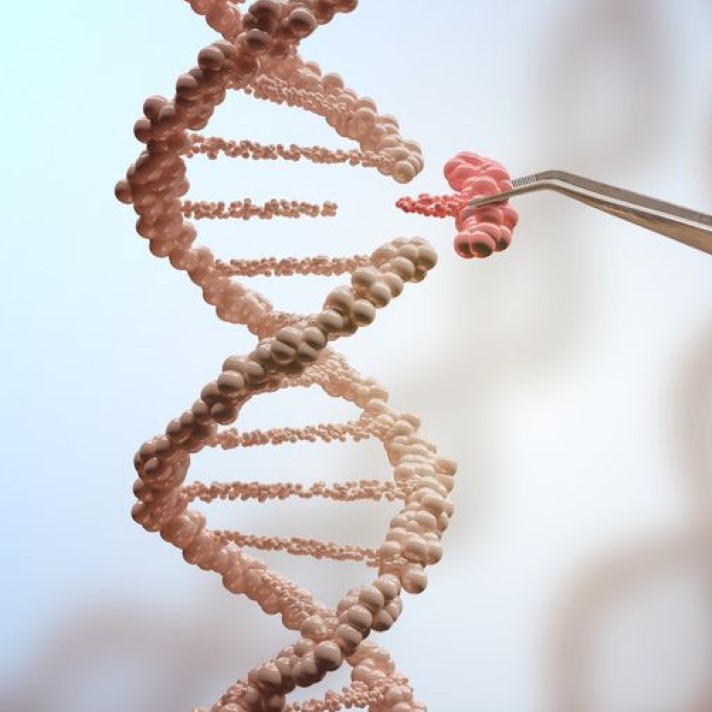LUMC researchers discover way to improve DNA cut-and-paste technique
&width=710&height=710)
CRISPR-Cas9 enables very specific modifications to be made in DNA. Such as repairing mutations or adding a whole new gene. This revolutionary technique has rocked the scientific world quite a bit. The possibilities seem almost endless. In theory, for instance, hereditary diseases can be removed from human embryos. It is no surprise that the development of this technique was subject to ethical discussions.
Until now, researchers have mainly used this technique in the laboratory. It allows them to investigate the function of certain genes or the effect of a specific mutation. The clinical application of CRISPR-Cas9 is still somewhat behind, partly because of the risk of mutations elsewhere in the DNA than for which CRISPR-Cas9 is used. The researchers have now found a solution to this problem.
More efficient experiments
"If we inhibit some of the natural DNA repair processes, the success of this technique increases enormously," says Joost Schimmel, researcher in the group of professor Marcel Tijsterman. "Normally, at most 5% of all cells contain the desired modification after CRISPR-Cas9, whereas now the average is about 50%. We also see far fewer errors arising in other parts of the DNA." This news spread like wildfire at the LUMC and a growing number of researchers are knocking on Schimmel's door to learn more about this discovery. "Adding these inhibitors makes many experiments with CRISPR-Cas9 in the lab easier, faster and more efficient."
How does it work?
"Before CRISPR-Cas9 can make a specific modification in DNA, it breaks both DNA strands," explains Schimmel. "Normally, the cell wants to repair such a break as quickly as possible. There are three ways it can do that." Two of them make many mistakes during gluing (NHEJ) and knitting (TMEJ) the DNA strands together, leading to mutations. Blocking these two repair processes leaves room solely for the error-free repair process.
Tweaking patient DNA?
Perhaps this discovery will also advance the application of CRISPR-Cas9 to treat diseases. "We are keenly awaiting a clinical trial testing the inhibitor of the TMEJ repair process in breast cancer patients with the BRCA gene. In this type of cancer, we actually see that if we completely shut down DNA repair in cancer cells, the cells eventually die," says Schimmel. These results are important to show whether this inhibitor is safe, and works, in humans. "Perhaps positive results from this clinical trial will boost research into CRISPR-Cas9 as a treatment."